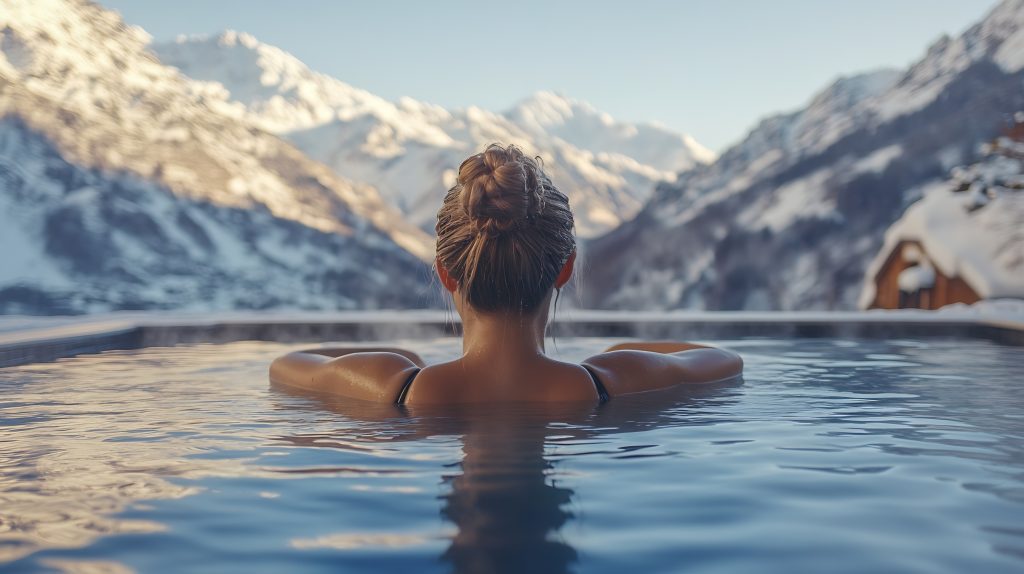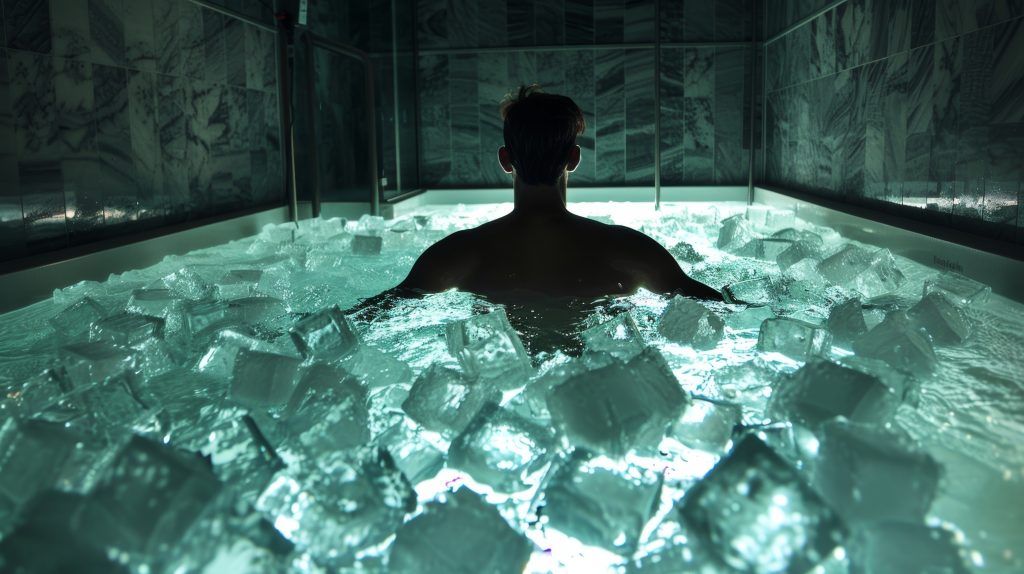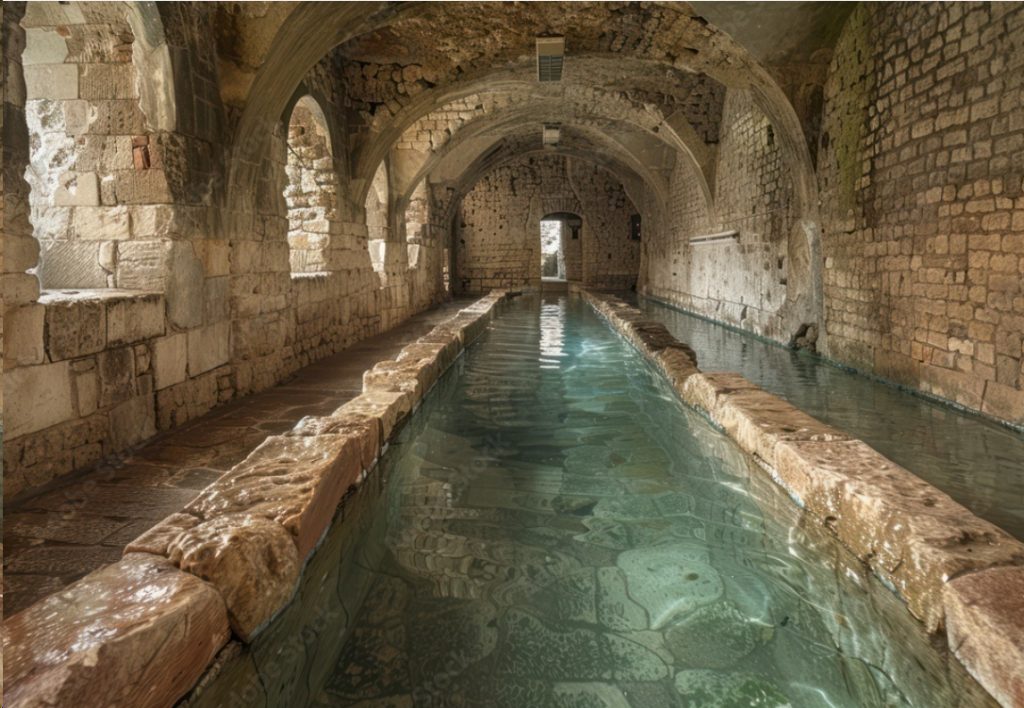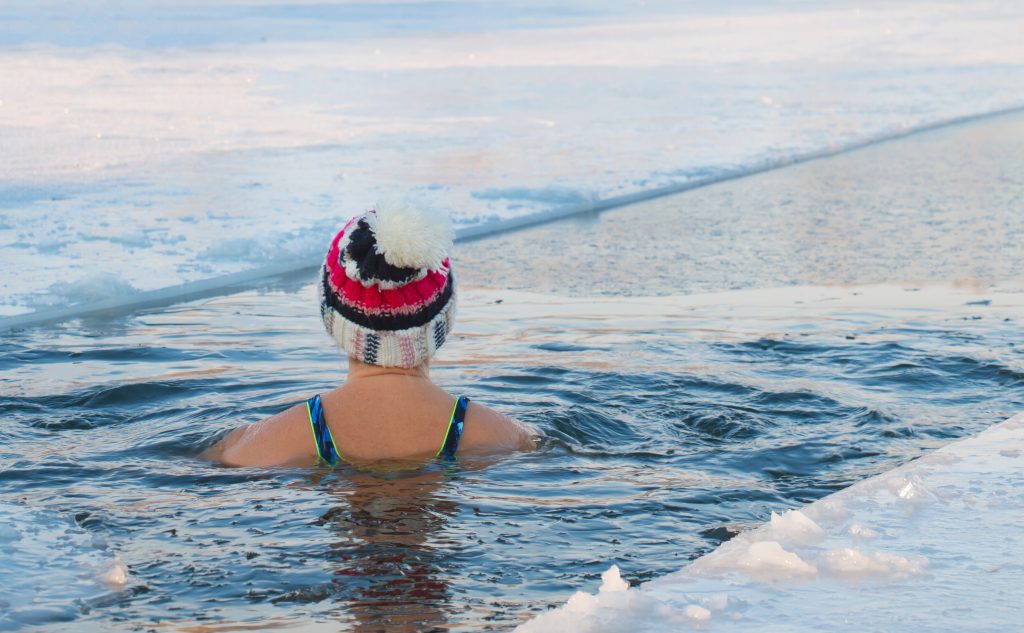
Cold water therapy has grown in popularity over recent years thanks to high profile media coverage on the health benefits. In addition, athletes, wellness enthusiasts, and researchers have explored and promoted the benefits of cold water exposure to improve recovery, mental health, and overall wellbeing. Cold water therapy includes methods such as cold showers and cold water immersions.
This type of alternative therapy is believed by some to help reduce reliance on medication for recovery and pain management. Used for centuries by ancient and modern civilizations to boost health parameters, there is now a large body of evidence supporting the positive benefits of cold-water therapy for improved physical and mental health, including immersions in natural bodies of cold water like cold lakes.
Contents
A brief history of cold-water therapy
The ancient Greeks, Egyptians, and Romans all used cold water therapy to treat injuries and reduce inflammation. Roman baths, for example, often included a frigidarium, or cold plunge pool used after a hot bath to stimulate blood flow and improve circulation. Similarly, elite athletics today use ice baths to reduce muscle soreness and inflammation following intense aerobic exercise.
In traditional Chinese medicine, cold water hydrotherapy is used to rebalance the body’s energy and improve health outcomes. Furthermore, immersion in cold water is a long-standing tradition in Nordic and Eastern European countries – and especially Finland where the practice of alternating sauna and ice-cold water immersion is well-documented and still popular today.
The resurgence in Europe and North America during the 19th century was galvanized by hydrotherapy advocates Sebastien Kneipp and Vincent Priessnitz, who promoted cold water therapy as an alternative treatment for major illnesses.
Why is cold water therapy good for you?
Also referred to as cold hydrotherapy or cold immersion therapy, cold water therapy involves sustained immersion in cold water for therapeutic purposes, whether ice baths, cold showers, or swimming in natural bodies of cold water.
Clinical evidence suggests significant benefits of cold-water therapy. These include improved muscle recovery and enhanced immune function – for better mood and stress management.
In addition, cold water therapy at home is a effective solution, allowing you to exercise, stretch and relax body and mind at your leisure and in total privacy.
While not suitable for everyone, cold water therapy can be a powerful tool for those looking to improve their physical and mental health.
What are the physical benefits of cold-water therapy?
There are various physiological mechanisms – triggered by cold water immersion – with proven benefits to overall health:
- Reduce muscle soreness and inflammation:
Cold water immersion can help reduce muscle soreness and inflammation following intense physical activity. The cold temperature constricts blood vessels, reducing swelling and tissue breakdown. After the initial constriction, blood vessels expand, promoting circulation and aiding in recovery. This can help boost recovery from sports injuries and help manage chronic pain.
- Enhance circulation:
Alternating between cold and warm water increases blood flow circulation and delivers freshly oxygenated blood to areas of the body that need to recover, as well as helping to flush out metabolic waste from the muscles.
- Boost immune system:
Regular exposure to cold water has been linked to a stronger immune system. It can increase the production of white blood cells, which help fight off infections.
- Improve metabolism:
Cold exposure can activate brown fat, a type of fat tissue that generates heat and burns calories, potentially aiding weight management.
Cold water can improve the skin’s appearance by tightening pores and increasing blood flow, which can lead to a healthier complexion. It can also add shine to hair by closing the hair cuticles.
Cold water therapy benefits mental health
Equally, cold water hydrotherapy is a natural way to boost mental health as part of a holistic approach to mood enhancement, alongside medication, or in isolation, depending on individual needs:
-
Reduce stress and anxiety:
Cold water immersion can activate the sympathetic nervous system, increase levels of beta-endorphins, and boost the production of noradrenaline, all of which can help reduce stress and improve mood.
-
Improve mood and energy levels:
The release of endorphins – the body’s natural ‘feel-good’ hormones – can improve mood and increase energy levels.
-
Enhance focus and alertness:
The shock of cold water stimulates the body and mind, leading to increased alertness and better focus throughout the day.
-
Improve sleep quality:
Cold water therapy can help regulate the autonomic nervous system (that controls heart rate, blood pressure, respiration, and digestion), leading to better sleep patterns and improved overall sleep quality.
Is cold water immersion suitable for everyone?
Cold water immersion therapy is often used in physiotherapy to aid recovery after an injury and build muscle strength but is suitable for a wide range of people, whether for at home therapy without supervision.
Ice baths, for example, are beneficial for athletes to aid recovery and reduce muscle soreness after an intense workout or competition, while many individuals use regular cold immersion sessions to relieve chronic pain or inflammation.
Others are attracted to cold water exposure as a natural, but effective way to manage stress, improve mood, and reduce anxiety – or for those looking to boost their immune system.
Whatever the motivation, users should consult a medical practitioner before starting cold water immersion as it can trigger cold water shock, arrhythmias or abnormal heartbeat, and hypothermia.
How to get started with cold therapy?
Gradual exposure is the best way to get the most from cold water therapy and to avoid any possible negative effects. Start with short cold showers or brief cold water splashes and gradually increase the duration as your body adapts. Acclimatizing to cold temperatures can enhance the effectiveness of cold water therapy by improving blood circulation and reducing inflammation.
An alternative and convenient way to acclimatise to cold therapy is immersion in an ice bath. This will enable you to start using your plunge or hydrotherapy pool, and take full advantage, as soon as its ready. Fill a bathtub with cold water and ice and immerse your body for a few minutes. Start with shorter durations and slowly build up tolerance.
Likewise, you may prefer cold water swimming in a natural lake, river, or open water to allow your body to adapt to cold exposure. Cold water swimming can be an invigorating and effective form of cold-water therapy.
Regular cold therapy is key to reaping the benefits. Incorporate cold water exposure into your routine a few times a week.
Types of cold water therapy methods
There are several types of cold water therapy, each with its unique approach and benefits. Here are some common types:
Cold showers: Short, sharp or sustained exposure can aid circulation, increase alertness, enhance mood, and reduce muscle soreness.
Ice baths: Immersion is a cold water bath filled ice, reduces muscle soreness and inflammation, speeds up recovery after intense physical activity, and may boost immune function.
Cold plunge pools: These are specifically designed for cold water immersion, often found in spas and wellness centres. Like ice baths, they help with muscle recovery, reducing inflammation, and invigorating the body.
Frequently asked questions
Is cold water therapy safe?
Cold water puts your body under stress. This is how it’s believed to produce many of the positive effects, like boosting the immune system, however if you have any health issues it could be that cold therapy is not for you. It is recommended to seek medical advise if you have any underlying medical conditions, such as problems with your heart or asthma.
How do I begin with cold therapy?
Tolerance to the cold needs to be built up gradually. You are better off starting with a cold shower and gradually building up your resistance to the cold.
How often should you practice cold therapy?
You don’t have to take cold water baths every day, especially to begin with, but try to keep some regularity in your cold therapy sessions to build up tolerance. This is the only way to give your body a chance to adapt to the cold. Try to start with cold therapy three times a week. Over time, perhaps a cold shower every morning can become an integral part of your routine.

























